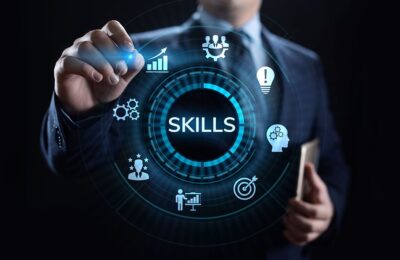The word “learning styles” is frequently connected with academic and academic applications. The standard meaning of “learning styles,” however, is really a small , incomplete slice from the overall contextual understanding needed for effective learning and teaching outcomes. It’s really no question why there’s sometimes debate and confusion about “learning styles.”
My organization has worked in the area of practical neuroscience since 1992, building brain-based human development products for academic success, self improvement and business applications. The objective of this information is to grow the phrase “learning styles,” so learners and teachers alike can embrace and apply this essential understanding. The main concepts affect the totality of existence, not only the classroom.
What exactly are “Learning Styles?”
Each individual has unique brain pathways preferences to take and consider physical information.
Physical Pathways: Visual (seeing), Auditory (listening) and Kinesthetic (hands-on)
Cognitive PathWays: Consecutive (logical), Global (main issue) and Integrated (cognitively balanced)
An individual’s “learning style” is often referred to as their most powerful or primary physical path to understand (e.g. being “kinesthetic”). This can be a limited and incomplete method of viewing “learning styles.” The succession of physical preferences is essential since it takes several physical pathways to secure received information. As examples, many people have to “view it and listen to it,” others might want to “get it done and find out it,” and a few may choose to “listen to it and get it done.”
The different physical sequences are: KVA, KAV, VKA, VAK, AKV and AVK. (K = Kinesthetic,V = Visual, A = Auditory) The cheapest physical score is exactly what you have to pay least focus on and it is known as a “blind place.” Most students are KVA and VKA. Consider the training challenges of those students, who least prefer hearing this is of words, when learning inside a lecture setting, having a minimum of visual material and things you can do.
Another 1 / 2 of the “learning styles” equation is when you’d rather process or consider physical information. Many people favor learning and dealing in foreseeable, logical, orderly, and process-driven environments. Others require open-ended situations, moving from task to task, and taking advantage of their imagination to understand and work optimally. The cognitive variations between Consecutive and Global thinkers are frequently overlooked both in the classroom and workplace. It’s frequently the defining element in achieving effective academic and career outcomes.
An expanded neuroscience meaning of “learning styles” is really a person’s physical sequence to take information as well as their cognitive preferences to process it. The mixture of physical and cognitive pathways is our representational system for existence. It provides us the opportunity to learn, express, perform, think, solve problems making decisions.
Who Ought To Know About “Learning Styles?”
The foremost and most significant person to own “learning style” understanding may be the “learner.” This is exactly why putting these details and knowledge at the disposal of teachers, alone, provides limited and often disappointing outcomes.
Learning goes well past the classroom, self-study or web based classes. Our minds are constantly receiving physical information, making choices, reaching conclusions, solving problems, and expressing. These processes constitute the flow and fabric in our lives. Therefore, everybody can usually benefit from understanding how their marbles are wired and what’s important to them.
Good reasons to share your “learning styles” information with other people (e.g. teachers, spouse, co-workers and buddies) include improving communications to allow them to transmit in your “wave length.” It is also useful, at work, to align work activities with brain strengths. Alignment improves morale, engagement and productivity.
What’s the Role of Teachers?
In my opinion effective teachers are continuous learners, who’re enthusiastic about their careers. They study from their students and exchange “guidelines” along with other teachers. Teachers realize that students learn in their own business, not individuals from the teacher. Great teachers encourage their students to uncover how their marbles choose to learn and think. They coach these to be responsible for his or her own learning and leverage their brain strengths. Effective teachers establish safe and non-judgmental environments. They offer learning sources and encourage their students to educate each other the greatest type of learning is teaching.
Summary
The neuroscience concept of “learning styles” may be the foundation for faster learning, effective careers, better relationships and private growth. Understanding how your mind would rather learn and think is paramount to some better and fewer demanding existence. Everybody thinking about improving their quality-of-existence may benefit out of this important understanding.
















